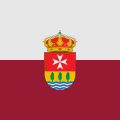Crimson
The crimson, also called red scarlet and, formerly, crimson, crimson or Cremesino, it is a vivid purplish-red color, which can also be described as a very vivid carmine.
The crimson color corresponds specifically to the coloration of the powder that resulted from crushing the dried bodies of the insects called kermes (Kermes vermilio), which were collected mainly from the Quercus coccifera shrubs , and which was marketed in Mediterranean countries as a pigment to dye fabrics.
The color of the quermes dye has also been called «crimson» —which is similar to the «carmine» of the artistic paints that today are marketed under that color denomination— and the silk or woolen cloth dyed in color scarlet, which were generally etched with alum and tinted with crimson. More broadly, crimson can mean the color scarlet or any cloth dyed bright red.
#AE0E36
#E51A4C
CMYK (0.95.55.0)
Other swatches of the crimson color are shown on the right.
Etymology
The word «crimson» appears in the Spanish language in the middle of the XV century, although it was preceded by Clemesinus, used during the 14th century. Derived from medieval Latin cremesinus, via the Hispanic Arabic qarmazí, 'of the color of quermes'.
Web Color
Web colors established by computer protocols for use on web pages include Crimson) shown below. In programming it is possible to call it by name, as well as by its hexadecimal value. See HTML colors.
| Carmesi | Carmesi | |
|---|---|---|
| HTML | #DC143C | #A20025 |
| RGB | (220, 20, 60) | (162, 0, 37) |
| HSV | (348°, 91 %, 86 %) | (346°, 100%, 64 %) |
| Reference | X11 | Windows Phone 8 |
History and uses
In 15th century Europe, scarlet was considered the most sumptuous and expensive color, and crimson, being similar, shared that privilege. It was a major dye in the Tuscan dyeing industry of the time, and at the same time the main color of mourning clothes, followed by scarlet and peacock (a dark purple).
Spanish vexillology
Crimson is considered the traditional vexilological color of Castile (Spain). The banners of many Castilian towns and villages are currently and traditionally defined by that color. However, confusion about the precise color of this "crimson" has given rise to variants.
It should be remembered that "crimson" is not only a color denomination, but also designates silk or wool fabrics dyed crimson or scarlet and, by extension, any cloth dyed bright red.
In the 18th and 19th centuries it was judged that the so-called crimson represented the heraldic purple, leading to consider the Castilian banner carried by the community members as purple, even without any proof of this. Later, various specialists justified the error in the discoloration of many crimson taffeta flags and banners, which over the years take on a purplish or purple hue.
Currently, numerous territories and towns in Spain define the color of their flags as crimson, some simply nominally and others specifying their coloration exactly through technical specifications, giving rise to variations. The most common are the constructions with the arms of the organization or municipality on a crimson cloth, as is customary with confectioners.
Cartagena Red
In the Spanish region of Murcia, vexillological crimson is called Cartagena red; It receives that name because it is the color of the flag of the municipality of Cartagena. It has officially been standardized as Pantone 202, a code belonging to the Pantone Matching System color system.
This is a dark purplish red.
Autonomous communities of Spain
Spanish provinces
Spanish municipalities
Municipalities whose flags are inscribed in a single crimson field:
Municipalities whose crimson component is partial:





























































